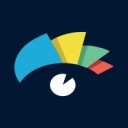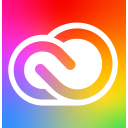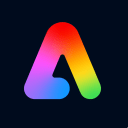Venngage vs Piktochart: Choosing the best tool for your visual content
- 01Venngage vs Piktochart: overview
- 02What's the difference between Venngage and Piktochart?
- 03Venngage pros and cons
- 04Piktochart pros and cons
- 05Venngage compared to Piktochart
- 06Piktochart compared to Venngage
- 07Features comparison
- 08Venngage vs Piktochart: Which is the best for your business?
- 09Promotions on Design software
- 10Alternatives to Venngage & Piktochart
Save up to $144 on Piktochart
Save up to $144 on Piktochart
Creating visually compelling content is one of the most effective ways to communicate complex information and engage both potential and existing customers. Compared to traditional text-heavy formats, visual content such as infographics and presentations can quickly capture attention and enhance understanding. But how do you create these visuals efficiently, without design expertise?
The solution is an infographic design platform. With a range of options available, this article compares Venngage vs Piktochart, two leading tools for creating infographics, presentations, and reports. By examining their core differences, features, and ideal use cases, you’ll have a clear understanding of which tool best suits your design needs by the end of this article.
Venngage vs Piktochart: overview
When it comes to infographic creation and design software, Venngage and Piktochart stand out as two prominent tools, each known for their unique strengths and robust offerings. Their feature sets cater to different user needs, making the decision between Venngage and Piktochart a nuanced one.
To help you make an informed choice that best suits your design goals, we've created a comprehensive comparison table that highlights the key attributes of each platform. Each feature is evaluated with a star rating and accompanied by detailed commentary to guide you through the strengths and limitations of both tools. This comparison empowers you to navigate the Venngage vs Piktochart landscape effectively, ensuring you select the solution that aligns with your specific requirements, whether you're designing complex data-driven visuals or seeking an easy-to-use tool for quick infographic creation.
What's the difference between Venngage and Piktochart?
Venngage and Piktochart are both powerful tools for creating infographics, reports, and visual presentations, but they differ significantly in terms of features and user experience. The primary distinction lies in the scope and complexity of the design tools each platform offers. Venngage provides a more robust suite of features, including advanced customization options, data integration, and collaboration tools. It’s designed to handle complex, data-driven visuals, making it ideal for businesses, educators, and professionals who need to create detailed reports or infographics with multiple contributors. However, this advanced functionality can make Venngage more complex to use, requiring a steeper learning curve for new users.
Piktochart, on the other hand, is geared towards simplicity and ease of use. It features an intuitive drag-and-drop interface and a wide range of customizable templates, making it a great option for beginners or users who need to create visuals quickly and without much design experience. Piktochart doesn’t offer as many advanced features as Venngage, but its simplicity makes it accessible for small businesses, educators, and individuals who prioritize ease of use over highly customizable designs.
Another key difference is in their approach to collaboration. Venngage supports team collaboration with features like real-time editing and feedback, which is particularly useful for larger teams or businesses working on shared projects. Piktochart, while offering some basic collaboration tools, doesn’t provide the same level of team-based functionality as Venngage.
Finally, their pricing strategies reflect these differences. Venngage’s paid plans start at $10/month, offering a wider range of features for advanced users and teams, while Piktochart’s Pro plan starts at $14/month, with a focus on affordability for individuals and smaller teams. Choosing between the two depends on whether you need advanced design tools and collaboration features or a more straightforward, user-friendly platform.
Venngage pros and cons
What are the advantages of Venngage?
- Extensive template library: Venngage offers a vast selection of professionally designed templates for infographics, reports, presentations, and more, allowing users to quickly create visually appealing content for various industries.
- Advanced data integration: Venngage enables users to seamlessly integrate data from spreadsheets and other sources, making it ideal for creating data-driven visuals and reports.
- Collaboration tools: The platform supports real-time collaboration, allowing multiple team members to work together on the same project, making it great for businesses and teams.
- Customization options: Venngage provides a wide range of customization options for design elements, including fonts, colors, and layouts, giving users the flexibility to match their branding or creative vision.
- User-friendly interface: Despite its advanced features, Venngage maintains an intuitive interface, allowing users to get started quickly, even without a design background.
What are the disadvantages of Venngage?
- Steep learning curve for advanced features: While the basic functionality is user-friendly, mastering the more advanced tools and customization options may require a significant learning curve.
- Higher pricing tiers: Venngage's advanced features and collaboration tools are locked behind higher-tier pricing plans, which can be a drawback for smaller businesses or individuals with limited budgets.
- Limited free version: The free version offers only basic functionality, and access to premium templates and export options is limited without upgrading to a paid plan.
- Performance issues with large projects: Handling larger or more complex infographics with multiple data points can sometimes slow down performance, leading to lag or delays.
- Export limitations in lower tiers: Users on the lower-tier plans face limitations on export quality, with high-resolution and watermark-free exports reserved for higher-priced plans.
Piktochart pros and cons
What are the advantages of Piktochart?
- Intuitive drag-and-drop interface: Piktochart is extremely user-friendly, with an intuitive drag-and-drop interface that makes it easy for beginners and non-designers to create professional-quality visuals quickly.
- Wide range of customizable templates: Piktochart offers a large variety of pre-designed templates for infographics, reports, and presentations, allowing users to customize them to fit their specific needs, saving time and effort.
- Affordability: Piktochart’s pricing plans are competitive, offering affordable options for small businesses, educators, and individuals, especially when compared to other design tools with similar features.
- Versatile export options: Piktochart supports various export formats, including PNG, PDF, and even interactive HTML, giving users flexibility in how they share and present their content.
- Ideal for simple, quick designs: The platform is perfect for users who need to create simple and effective visuals quickly, without dealing with complex design tools or features, making it ideal for small teams or educators.
What are the disadvantages of Piktochart?
- Limited advanced features: Piktochart may lack some of the more advanced design capabilities offered by competitors like Venngage, making it less suitable for users needing highly customized, intricate designs.
- Basic collaboration tools: While Piktochart does offer some collaboration features, they are not as robust as those found in other platforms, which may limit its effectiveness for larger teams requiring real-time collaboration.
- Performance issues with large projects: Similar to other online design tools, Piktochart can experience performance slowdowns when handling complex or data-heavy projects, leading to lag and decreased productivity.
- Customization limitations: While Piktochart offers customizable templates, some users may find the customization options limited compared to other tools, particularly when it comes to fine-tuning design elements.
- Limited free version: The free version of Piktochart has restricted access to premium templates and export options, and users may need to upgrade to a paid plan to unlock the full potential of the platform.
Compare Piktochart to other tools
Venngage compared to Piktochart
Venngage and Piktochart are both popular tools for creating infographics, presentations, and reports, but they cater to different user needs. Venngage offers more advanced features, including detailed customization options, data integration, and robust collaboration tools, making it ideal for larger teams and businesses with complex design requirements.
On the other hand, Piktochart is known for its simplicity and ease of use, with an intuitive drag-and-drop interface that allows users to create professional visuals quickly. While Venngage is suited for users seeking more design flexibility and team collaboration, Piktochart excels in being accessible and user-friendly for beginners and smaller projects.
Is Venngage better than Piktochart?
Whether Venngage is better than Piktochart depends on your specific design needs. Venngage is ideal for users who require advanced features like data visualization, collaboration tools, and in-depth customization, making it a top choice for businesses and teams working on complex projects. It excels in offering flexibility for those needing tailored, data-driven visuals.
However, Piktochart is better suited for those prioritizing simplicity and ease of use. Its drag-and-drop interface is perfect for users looking to create professional visuals quickly without the need for advanced design skills. Venngage is better for more complex designs, while Piktochart is better for straightforward projects.
What is Venngage best used for?
Venngage is best used for creating professional, data-driven infographics, reports, and presentations that require advanced customization and design flexibility. It is ideal for businesses, marketers, educators, and teams needing to communicate complex information visually while maintaining brand consistency.
Venngage’s robust set of tools, including data integration and charting options, make it particularly useful for generating visuals from data-heavy content. Additionally, its collaboration features allow teams to work on projects simultaneously, making it a great choice for larger organizations. Venngage is especially valuable when users need to create polished, highly customized visuals for professional or educational use.
Can Venngage replace Piktochart?
Venngage can replace Piktochart for users who require more advanced design features and collaboration capabilities. While Piktochart excels in simplicity and ease of use, making it ideal for beginners or those who need quick and simple infographics, Venngage offers greater flexibility with detailed customization, data integration, and team collaboration tools.
Businesses or teams needing to create more complex, data-driven visuals might find Venngage a more suitable option. However, for users prioritizing speed and ease of use over extensive design capabilities, Piktochart may still be the preferred choice.
Is Venngage cheaper than Piktochart?
Venngage is generally priced more affordably than Piktochart at the entry-level tier. Venngage’s basic premium plan starts at around $10 per month, offering access to a wide range of templates and customization options. Piktochart’s Pro plan, on the other hand, starts at approximately $14 per month.
However, the value of each platform depends on the specific features needed. Venngage provides more advanced data integration and collaboration tools, while Piktochart focuses on ease of use. For users seeking comprehensive design tools, Venngage may offer better value, but Piktochart’s simplicity might justify the higher cost for some users.
Is there a better Design software than Venngage?
While Venngage is a powerful tool for creating infographics and visual content, other alternatives to Venngage like Piktochart, Canva, and Adobe Express are also popular choices.
The ideal software depends on your unique design needs and preferences. For users who prioritize simplicity and quick design creation, Piktochart might offer an advantage with its user-friendly drag-and-drop interface and straightforward template options. Canva excels for those seeking versatility, offering a broad range of design types beyond infographics. Adobe Express provides more advanced customization for users familiar with design software. Ultimately, the best choice depends on aligning the tool's features with your specific design goals and workflow.
Piktochart compared to Venngage
Piktochart and Venngage are both excellent tools for creating infographics, but they serve slightly different user needs. Piktochart is known for its ease of use and simplicity, making it ideal for beginners and users who need to create visuals quickly without advanced design skills. It offers a straightforward drag-and-drop interface with a focus on infographics and presentations.
Venngage, on the other hand, provides more advanced customization, data integration, and collaboration tools, making it better suited for businesses and teams requiring detailed, data-driven designs. While Piktochart is simpler, Venngage offers more flexibility and depth for complex visual content creation.
Is Piktochart better than Venngage?
Whether Piktochart is better than Venngage depends on what you prioritize in a design tool. Piktochart is ideal for users seeking a straightforward, beginner-friendly platform with a focus on ease of use. Its drag-and-drop interface and simplicity make it perfect for creating visuals quickly, especially for smaller projects or users with limited design experience.
However, for those who need more advanced design features, data integration, and collaboration tools, Venngage offers greater depth and flexibility. Piktochart excels in its user-friendly approach, but Venngage is better for teams and businesses that require complex, customizable visual content.
What is Piktochart best used for?
Piktochart is best used for creating visually appealing infographics, presentations, and reports with minimal design effort. Its intuitive drag-and-drop interface makes it ideal for users without extensive design experience, allowing them to produce professional-quality visuals quickly. Piktochart is particularly useful for educators, marketers, and small businesses that need to convey information clearly and attractively.
Its wide range of customizable templates helps simplify the process of creating infographics and other visuals, making it a go-to tool for those who need simple, effective designs for presentations, data visualization, or storytelling without the complexity of advanced design software.
Can Piktochart replace Venngage?
Piktochart can replace Venngage for users who prioritize simplicity and ease of use over advanced design features. Piktochart offers an intuitive interface that allows users to quickly create infographics, presentations, and reports, making it ideal for beginners or small teams.
However, Venngage provides more advanced customization options, data integration, and collaboration tools, making it better suited for businesses or teams needing complex, data-driven visuals. If you require more flexibility, detailed designs, or team collaboration, Venngage might still be the better option. Piktochart is an effective alternative for straightforward visual content creation, but it may lack the depth of Venngage.
Is Piktochart cheaper than Venngage?
Piktochart is generally more expensive than Venngage at the entry-level tier. Piktochart’s Pro plan starts at around $14 per month, while Venngage’s premium plan begins at $10 per month. Both platforms offer free versions, but they come with limitations in terms of features and export options.
While Piktochart focuses on ease of use and quick visual creation, Venngage provides more advanced design tools and collaboration features, which may offer more value for the price. Ultimately, the choice between them depends on whether you prioritize cost, simplicity, or access to more comprehensive design capabilities.
Is there a better Design software than Piktochart?
Piktochart is a leading tool for creating infographics and presentations, but the design landscape offers many alternatives to Piktochart worth exploring.
Among these, Canva stands out for its versatility across various design types, offering an easy-to-use interface with more customization options. Venngage is another strong contender, especially for businesses needing advanced data visualization and team collaboration tools. Visme combines infographic creation with presentation design, making it a robust option for more complex visual projects.
The best choice depends on your specific needs—whether you prioritize simplicity, advanced features, or budget. Exploring these alternatives can help you find the ideal tool for your visual content creation.
50% off the annual Business plan on Piktochart
Get 50% off the annual Business plan on Piktochart and up to $144 savings with Secret.
Features comparison
Venngage Outshines Piktochart in User-Friendliness and Ease of Navigation
When starting with a new design tool, the ability to quickly adapt and navigate is essential for users, especially those new to graphic design. Venngage excels in this area, offering an intuitive interface that simplifies the design process for beginners. Its drag-and-drop functionality, streamlined toolbars, and clear, step-by-step instructions make it easy to create professional infographics, reports, and presentations without prior design knowledge.
Additionally, Venngage offers real-time collaboration features, further enhancing usability for teams. While Piktochart provides similar design features, users often report a steeper learning curve due to its slightly more complex interface, making Venngage the more user-friendly option for first-time users.
Piktochart Surpasses Venngage in Integration Capabilities and Data Connectivity
When it comes to integration possibilities, Piktochart stands out, offering more flexibility and connectivity than Venngage. Piktochart supports a wide range of integrations with popular productivity platforms and more, such as Google Sheets, Dropbox, and Flickr, enabling users to seamlessly import data, collaborate, and share projects across platforms. For example, its integration with Google Sheets allows users to easily pull live data into their designs, ensuring visuals are updated in real-time. This feature is particularly beneficial for users who need to create dynamic infographics or reports.
On the other hand, Venngage offers fewer integration options, which could be limiting for users who depend on a more diverse set of platforms for their workflow. This may present challenges for those working with extensive data sources or needing constant updates within their designs.
Venngage Excels Ahead of Piktochart with Its Extensive Customizable Templates
While both Venngage and Piktochart offer a range of customizable templates, Venngage outshines its competitor by providing a more extensive library of professionally designed templates. Venngage’s vast selection spans multiple categories, including business reports, data visualizations, marketing materials, and educational resources, allowing users to find templates that fit their exact project requirements.
For example, businesses can easily create detailed infographics on market trends, while educators can design visually compelling lesson materials. Venngage’s templates are highly adaptable, making it simple to adjust colors, fonts, and layouts to maintain brand consistency or create a polished, professional look. In contrast, Piktochart offers fewer options, making Venngage the better choice for users seeking versatility and variety in their design projects.
Both Venngage and Piktochart Offer Robust Collaboration Tools for Seamless Teamwork
Both Venngage and Piktochart provide teams with powerful collaboration features that enhance project efficiency and communication. With Venngage, teams can collaborate in real time, allowing multiple users to edit designs simultaneously. The platform also offers integrated commenting and feedback tools, ensuring that team members can provide input directly within the design, speeding up revisions and maintaining consistency.
Piktochart also supports real-time collaboration, allowing teams to share projects easily, but its features are slightly more basic compared to Venngage. Both tools enable smooth workflows for teams working on shared infographics, presentations, or reports, ensuring high-quality content is produced consistently, regardless of the platform chosen.
Piktochart Excels Ahead of Venngage with Interactive Design Features
While both Venngage and Piktochart offer a wide range of design elements, Piktochart takes the lead with its interactive components. Piktochart allows users to embed engaging elements such as videos, hyperlinks, and interactive charts, transforming static infographics or presentations into dynamic, interactive experiences. This is particularly beneficial for marketers and educators looking to boost audience engagement through multimedia content.
For instance, users can embed tutorial videos or add clickable links within reports, making the content more immersive. Venngage, while offering strong customization, lacks these interactive features, making Piktochart the better choice for those looking to create highly engaging, interactive visual content.
Both Venngage and Piktochart Offer Excellent Brand Customization for Consistent Visuals
Both Venngage and Piktochart recognize the importance of maintaining brand consistency across all visual content. Both tools allow users to upload and integrate brand-specific assets, such as custom logos, color schemes, and fonts, into their designs, ensuring that every infographic, report, or presentation aligns with the company's branding. For instance, Venngage’s Brand Kit feature enables users to store their brand elements in one place for easy access, streamlining the design process.
Piktochart similarly offers brand customization, making it simple to apply a consistent look across multiple projects. Whether you’re creating visuals for marketing, internal communications, or educational purposes, both platforms ensure your brand identity is preserved across all materials.
Venngage Excels Ahead of Piktochart with Advanced Data Visualization Tools
Although both Venngage and Piktochart provide users with charting and graphing capabilities, Venngage's data visualization tools are notably more robust. Venngage allows users to convert complex datasets into visually compelling infographics using highly customizable charts, graphs, and diagrams. Users can pull data from spreadsheets and easily create visuals that simplify complex information, such as financial reports, market research, or academic data.
Venngage offers advanced options for fine-tuning the design of these charts, from adjusting the color schemes to selecting the best layout for the data. This level of customization makes Venngage particularly valuable for professionals needing to present intricate information in a digestible and engaging format, giving it an edge over Piktochart's more basic offerings in this area.
Subscribe to our newsletters.
No FOMO here. Stay up-to-date on all the latest deals and news with our monthly newsletter straight to your inbox like 126,000+ entrepreneurs (+ Get 10% off on on our Premium Membership!)
Venngage vs Piktochart: Which is the best for your business?
Venngage is the best tool for you if:
- You need to create data-driven visuals, such as charts or infographics, with advanced customization options that allow you to easily convert complex information into engaging, easy-to-understand content.
- You collaborate with a team on shared design projects, as Venngage offers real-time editing, feedback features, and version control to streamline workflows and ensure consistency across your visual materials.
- You require branding consistency across all your designs, as Venngage allows you to upload and store brand assets, including logos, color schemes, and fonts, to maintain brand identity effortlessly.
- You work on a variety of projects, such as infographics, reports, presentations, and social media graphics, benefiting from Venngage’s extensive library of professionally designed templates suited for different use cases.
- You need powerful data visualization tools that integrate with external data sources, enabling you to seamlessly create detailed, dynamic visuals that update in real-time for presentations or reports.
Piktochart is the best tool for you if:
- You prefer an intuitive, drag-and-drop interface that allows you to create professional-looking infographics, presentations, and reports quickly, even with little to no design experience or training.
- You need simple yet effective customization options for creating visuals, making Piktochart ideal for users who want to personalize templates without the complexity of advanced design tools.
- You seek interactive features in your designs, such as embedding videos or adding hyperlinks, allowing you to create engaging, dynamic content for presentations or online sharing.
- You want to create visuals that pull data from sources like Google Sheets, ensuring your designs can display real-time, updated information seamlessly and effectively.
- You are working within a small team or as an individual, prioritizing affordability while still having access to essential design features and customizable templates for creating quick, polished visuals.
Alternatives to Venngage & Piktochart
Promotions on Design software
Start saving on the best SaaS with Secret.
Secret has already helped tens of thousands of startups save millions on the best SaaS like Venngage, Piktochart & many more. Join Secret now to buy software the smart way.









